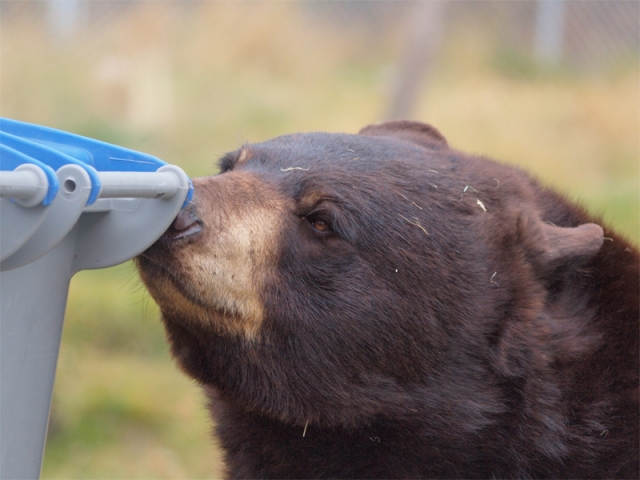A few tips to keep wildlife in the wild
It is the time of year when bears come out of hibernation and other wildlife become more active in British Columbia. Those animals that have become conditioned to non-natural food sources, like garbage or composts, will return to communities to help themselves.
Hibernating bears cut their metabolic rates in half in order to survive long winters without eating. These bears come out of their winter sleep hungry and search for food.
Other wildlife, like young cougars, travel widely to search for unoccupied territory, which can lead to increased encounters with people.
These animals can also be inexperienced hunters and are more likely to seek out alternative prey, like pets. Wildlife, including coyotes, are susceptible to attractants and intentional feeding by people.
The most effective and natural way to prevent conflicts with wildlife in urban areas is to put away food attractants like garbage, birdseed, compost, pet food and fruit. Communities where attractants are managed properly have seen a decline in related human-wildlife conflicts and in the number of animals that have to be destroyed.
The public is encouraged to report human-wildlife conflicts that threaten public safety or result in significant property damage by calling the Report All Poachers and Polluters (RAPP) line, toll-free at 1 877 952-7277 (RAPP), or visit the RAPP website at: www.rapp.bc.ca
Quick Facts:
- It’s important that you know what to do when you encounter wildlife like bears, cougars, coyotes and wolves in urban areas.
- It’s essential to remain calm and never approach the animal.
- Always keep the animal in front of you (never turn your back) and back away slowly (never run).
- Make yourself look as large as possible by waving your arms above your head. Make loud noises, shout at the animal in a loud, aggressive voice or bang pots and pans and throw objects, like rocks and sticks.
- If possible, bring children and pets indoors.
- The Conservation Officer Service is the primary responder to human-wildlife conflicts where there is a risk to public safety, conservation concerns or where significant property damage has occurred.
- Under the Wildlife Act, conservation officers can issue a $230 ticket or notice for a court appearance to residents who do not secure attractants. Residents who intentionally leave out items that attract dangerous wildlife could also be issued a Dangerous Wildlife Protection Order. Failure to comply with an order carries a $575 fine.
- In 2012-13, the Conservation Officer Service received 25,184 calls regarding human-wildlife conflicts. Of those calls, 15,833 involved human-bear conflicts. Over the past five years in B.C., an average of 600 black bears have been destroyed each year, while 93 have been relocated due to conflicts with people.
- Relocating wildlife is neither viable nor a long-term solution to managing these kinds of conflicts. When wildlife is relocated, it most often returns to conflict situations, or it does not survive as it has to compete with already established populations.


























Comments